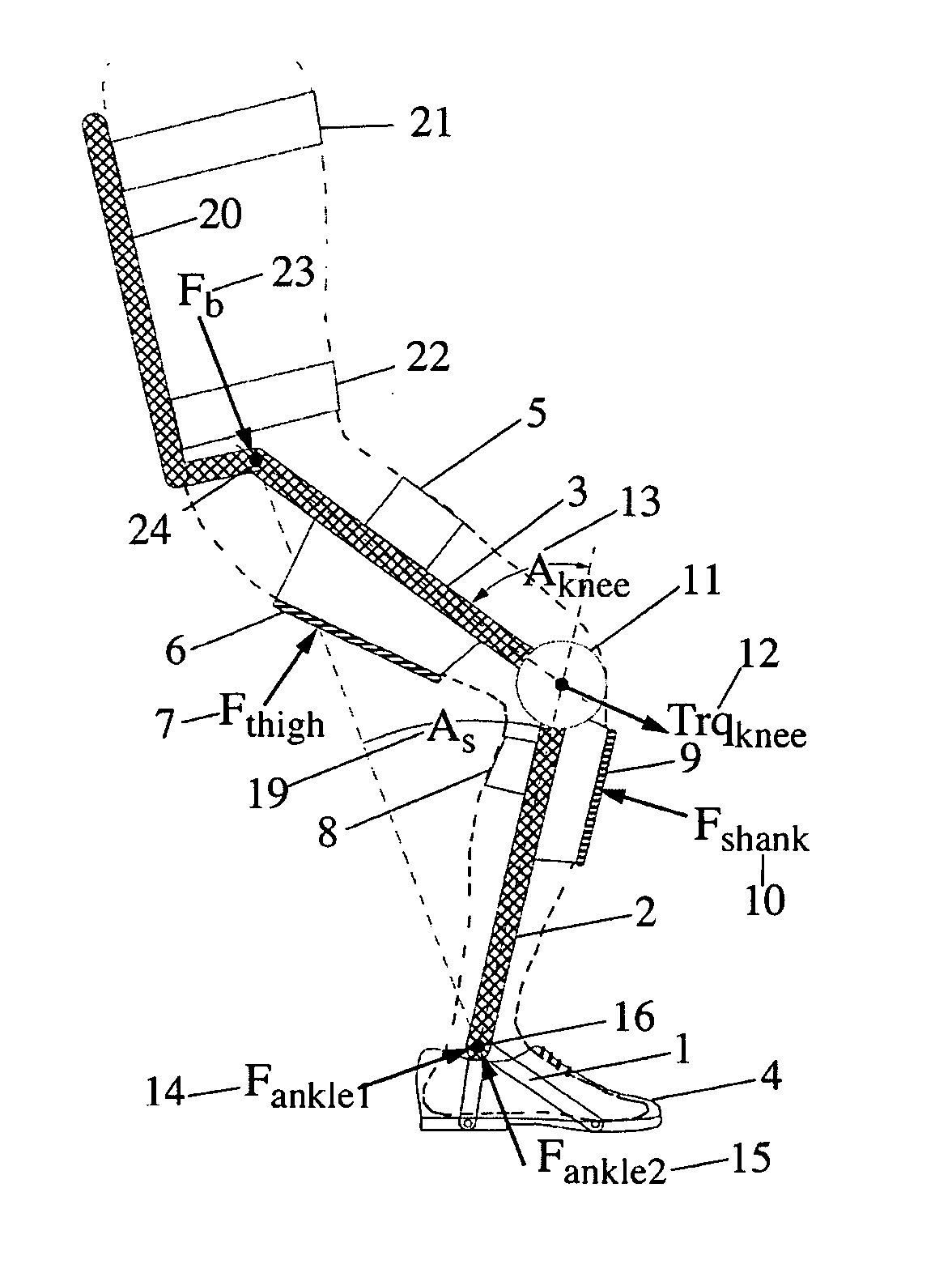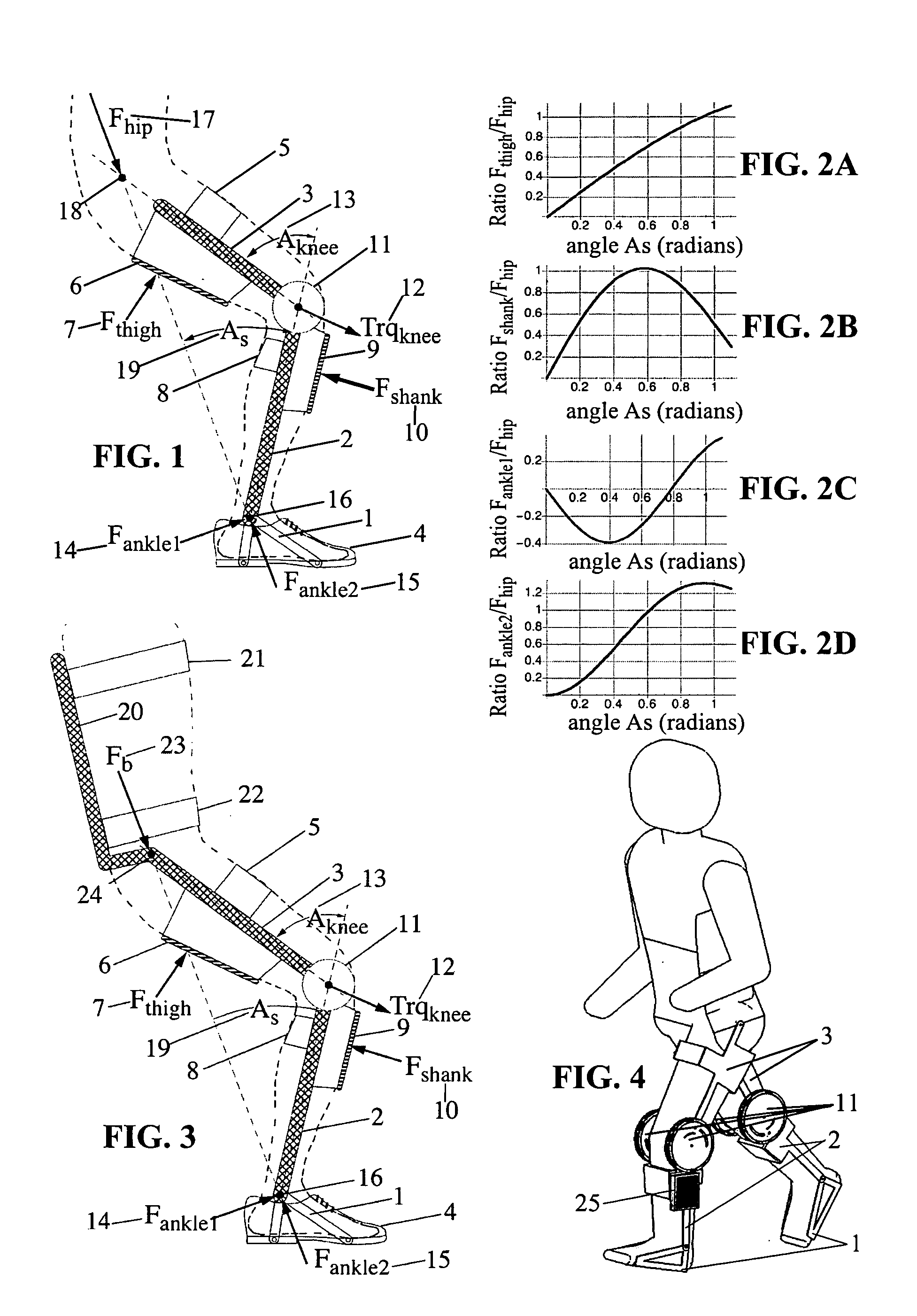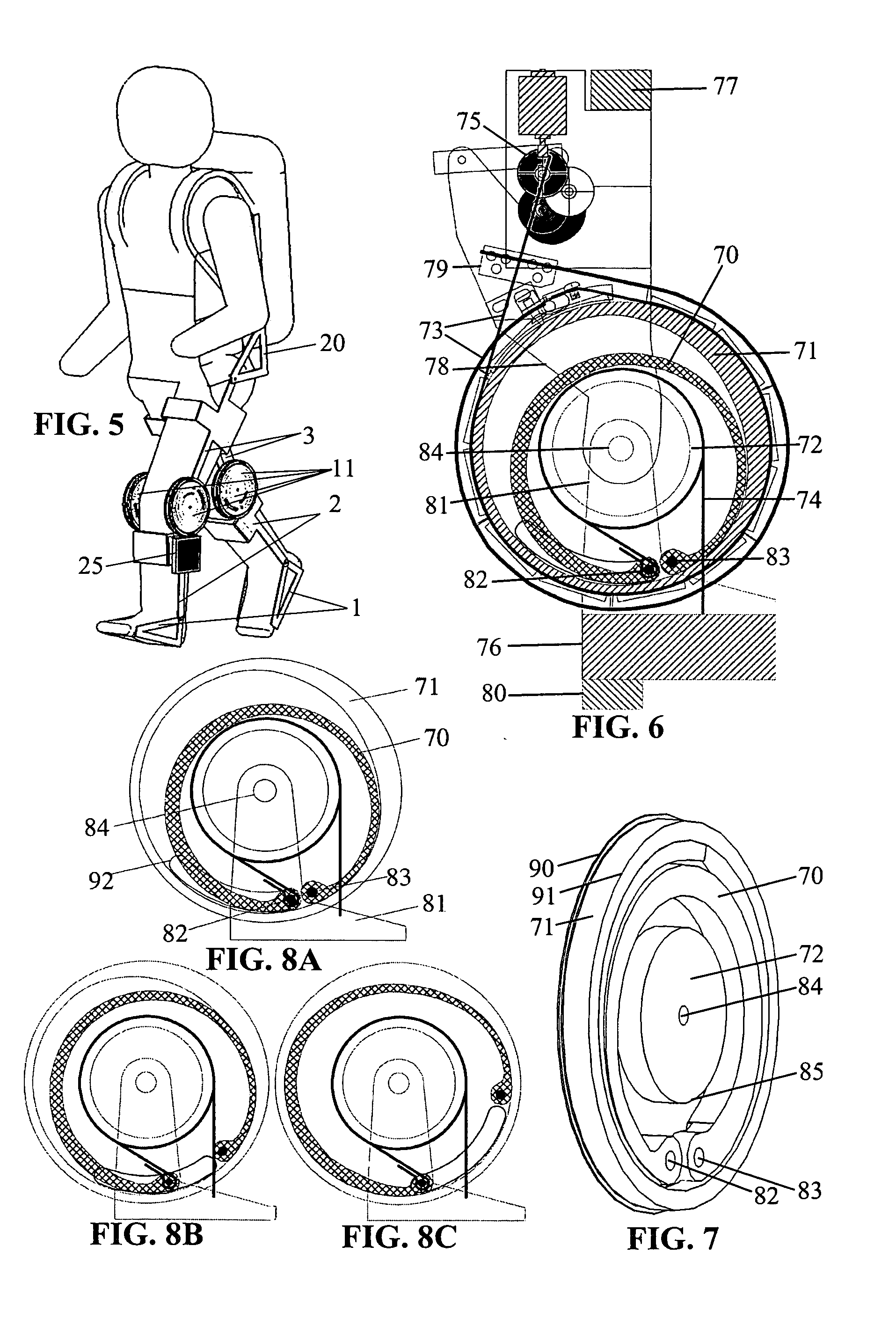Metabolically efficient leg brace
a leg brace and metabolic technology, applied in the field of metabolic efficiency leg braces, can solve the problems of not allowing the wearer to supplement the torso support, energy being added to the torso, energy being extracted from the torso, etc., and achieve the effect of minimizing the power drain of the battery
- Summary
- Abstract
- Description
- Claims
- Application Information
AI Technical Summary
Benefits of technology
Problems solved by technology
Method used
Image
Examples
Embodiment Construction
[0057] A description of preferred embodiments of the invention follows.
[0058] In the following discussion, the present invention shall be referenced as a leg brace or brace. When a wearer of the present invention dons the brace, the Ground Reaction Force (GRF) is transferred to the wearer's hip socket via two parallel structures. One structure is the wearer's femur, tibia, and foot skeletal bones. The other structure is the brace's thigh, shank, and shoe frames.
[0059] One embodiment of the invention addresses the problem of supporting the torso weight, supporting the weight of a carried load, and / or supporting the weight of an attached mass while standing, walking or running on any terrain. In addition to supporting the torso / carried load / attached mass weight, an embodiment of the invention also extracts and stores energy produced by the torso and / or carried load and / or attached mass during the period when the distance from a hip socket to an ankle is decreasing and then releases ...
PUM
 Login to View More
Login to View More Abstract
Description
Claims
Application Information
 Login to View More
Login to View More - R&D
- Intellectual Property
- Life Sciences
- Materials
- Tech Scout
- Unparalleled Data Quality
- Higher Quality Content
- 60% Fewer Hallucinations
Browse by: Latest US Patents, China's latest patents, Technical Efficacy Thesaurus, Application Domain, Technology Topic, Popular Technical Reports.
© 2025 PatSnap. All rights reserved.Legal|Privacy policy|Modern Slavery Act Transparency Statement|Sitemap|About US| Contact US: help@patsnap.com



